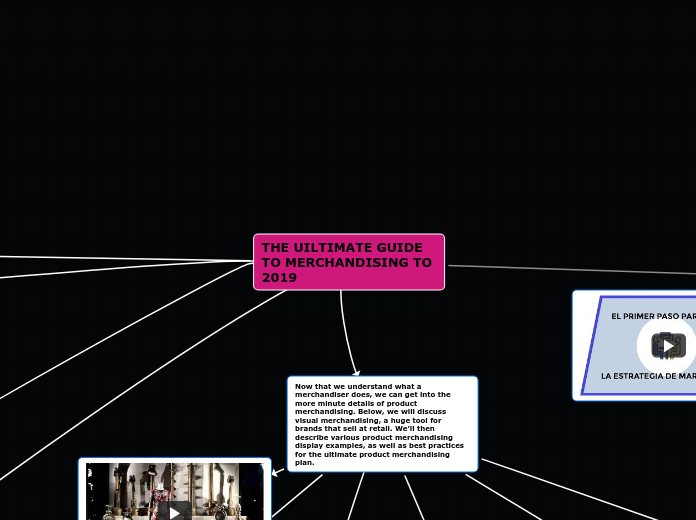THE UILTIMATE GUIDE TO MERCHANDISING TO 2019
Below we will discuss the three types of data that brands can track in order to guide their merchandising plans, followed by an explanation of one mode of collecting this data: merchandising audits.
Visual Merchandising: Catching Consumers' Eyes
Visual Merchandising: Catching Consumers' Eyes
Visual merchandising is a merchandising tactic that focuses on visually appealing to the consumer. Some examples of visual merchandising displays, Factors such as display color, design, ambience, and theme are all extremely important to visual merchandising.
When designing and implementing a visual merchandising plan, it is important to consider a variety of things. “Who is my target customer?” “what is my target customer looking for?” and “what has worked for me in the past?” are questions you should be asking yourself.
Merchandising Audits
One core method of tracking merchandising data is through merchandising audits. Merchandising audits are essentially an official report on retailer compliance and rep efficiency. Performing merchandising audits answers questions such as, “what displays are most appealing to my audience?” “where am I selling the most of which products?” and “which retailers do I need to check in with more often to ensure retailer compliance?”
Collecting and Analyzing Merchandising Data
Brands should always emphasize the importance of the three types of retail execution data: Activity Data, Sales Data, and Observational Data. Merchandising data most often falls under Observational Data: Store-level data that your team observes and records about your product in retail locations, such as the condition of your displays or position on the shelf.
The point of collecting this data is so that you can plug it into a cycle of continuous improvement that takes into account a wide range of factors. You can then derive insights from this data to inform future merchandising strategies.
Data-Driven Merchandising
Now that you’ve optimized your merchandising tactics, how can you measure their effectiveness? The answer is by using real time data analytics to take a data driven approach to merchandising. Encouraging merchandisers to log sales and marketing data as it comes in allows your team to have a constant stream of communication and creates an opportunity to see trends over a period of time. These observations can provide insight for strategic improvements going forward.
Now that we understand what a merchandiser does, we can get into the more minute details of product merchandising. Below, we will discuss visual merchandising, a huge tool for brands that sell at retail. We’ll then describe various product merchandising display examples, as well as best practices for the ultimate product merchandising plan.
Monitoreo de competencia
Keeping an eye on your competition is necessary to remain relevant in the market. It also can provide you with insight and inspiration on new tactics to use with your audience. Have your merchandising team record your competitors' price, promotions, labels, shelf location, and packaging.
Ensuring Retailer Compliance
With so many different products on store shelves, retailers are sometimes less concerned with perfect product presentation than sales and profit. Merchants need to get into the habit of monitoring POP displays, checking product gaps, and addressing any issues of improper product placement with a store manager.
Staying On Top of Orders
Procter & Gamble found that a lack of stock creates a direct loss of brand loyalty and equity, and encourages shoppers to search for competing products. It means that OOS instances not only cause brands to lose short-term sales revenue, but also future sales revenue as long-term customers find new favorites.
Properly Merchandising Shelves
A clean, well-stocked shelf will look more appealing to customers than a unkempt, nearly empty shelf. Merchandisers should pay special attention to the aesthetic of even their common shelf displays; Simple fixes such as making sure there aren’t any gaps where your products should be on the shelf and making sure your products are all facing the correct way make a huge difference in the long run.
Subtopc
Subtopic
Merchandising Best Practices
Simply knowing how to set up a merchandising display doesn’t guarantee a successful merchandising strategy. There are certain merchandising best practices that any merchandiser should employ to maximize impact.
Some of the responsibilities of a merchandiser include, but are not limited to.
• Collaborating with suppliers, manufacturers, and retailers to ensure proper execution of merchandising plans
• Ensuring retailer compliance with merchandising strategies
• Creating and organizing promotions and advertising campaigns
Merchandiser Job Description
Merchandisers are responsible for everything that happens to a product from the moment it is delivered to the store to the moment a shopper picks it up off the shelf.
Who Does Merchandising?
Almost any brand with a physical product uses merchandising tactics. From grocery merchandising, to cosmetics merchandising, to beer merchandising, catching the eye of the shopper is integral to increasing sales.
What Is Merchandising?
Merchandising takes into account how your products come across to consumers as they interact with them in a retail setting, and applies certain techniques to make those interactions as impactful as possible. It can consist of activities carried out by both marketing and sales, such as organizing shelves, setting up promotional displays.

